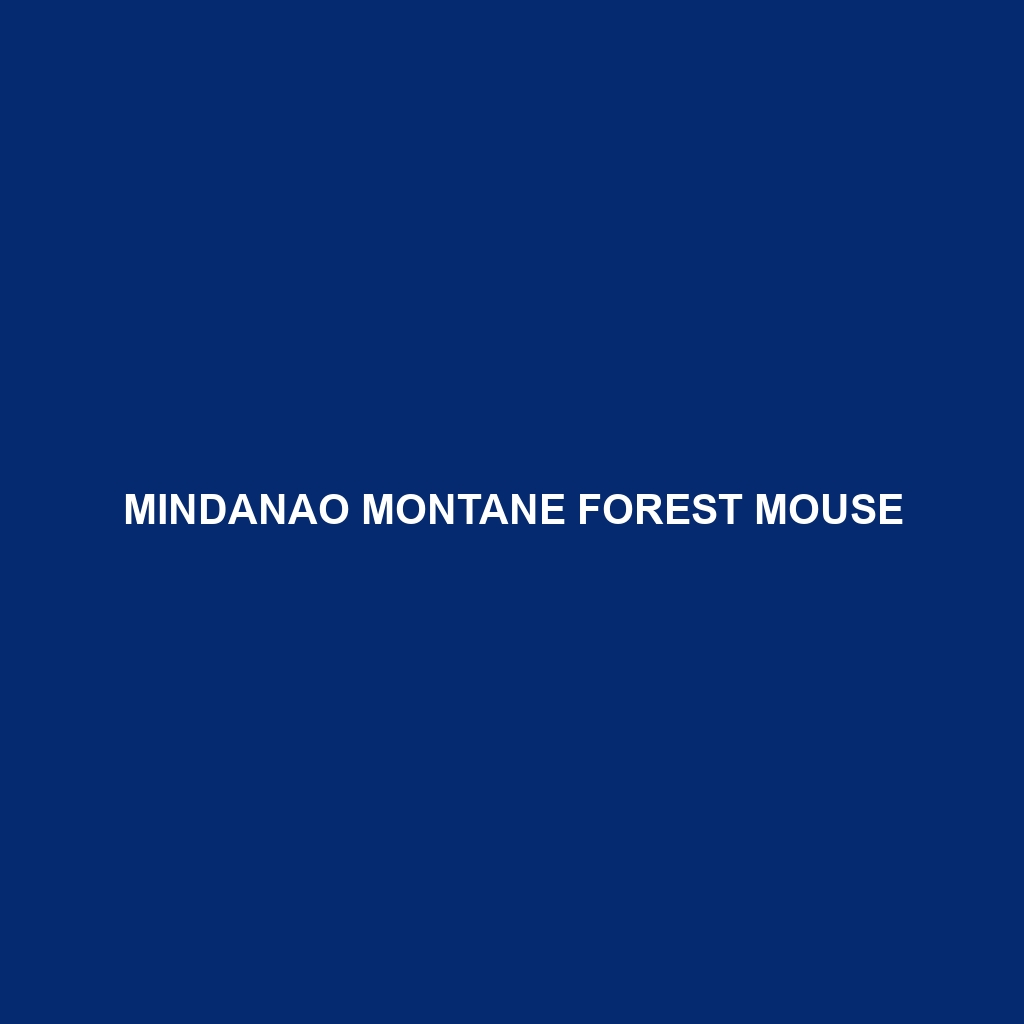Mindanao Montane Forest Mouse
Common Name: Mindanao Montane Forest Mouse
Scientific Name:
Habitat
The Mindanao Montane Forest Mouse is primarily found in the montane forests of the Mindanao Island in the Philippines. These mice thrive in high elevation forests characterized by dense vegetation, cool temperatures, and high humidity. Their preferred habitats include mountainous regions dense with tree cover, where they can find shelter and food.
Physical Characteristics
This rodent exhibits distinctive physical features that make it a unique specimen. Typically, the Mindanao Montane Forest Mouse weighs between 30 to 50 grams and measures approximately 12 to 18 cm in length, including its tail. Its fur is predominantly dark brown to grayish, with lighter underbellies. Notable characteristics include its elongated body, large eyes, and prominent whiskers, which enhance its sensory capabilities in its dimly lit habitat.
Behavior
The Mindanao Montane Forest Mouse is known for its nocturnal behavior, mainly becoming active at night to forage for food. These mice are agile climbers and spend much of their time in trees, utilizing their climbing skills to evade predators. They exhibit social behaviors, often found in small groups, which aids in foraging and enhances their survival rates. Their acute sense of smell is critical for locating food sources and detecting potential dangers.
Diet
The diet of the Mindanao Montane Forest Mouse predominantly consists of seeds, fruits, and small insects. They exhibit foraging behaviors that allow them to gather food efficiently, often storing surplus food in their nests to prepare for times when resources are scarce. Their feeding habits play an essential role in seed dispersal, contributing to the health of their forest ecosystem.
Reproduction
Mindanao Montane Forest Mice have a relatively high reproductive rate, typically breeding during the rainy season. Females can give birth to litters of 2 to 6 offspring after a gestation period of about 3 weeks. The young are born blind and helpless but grow rapidly, becoming independent within a month. Parental care is shared among the adults, enhancing the survival rate of the juvenile mice.
Conservation Status
Currently, the Mindanao Montane Forest Mouse is categorized as endangered due to habitat loss resulting from deforestation and climate change. Conservation efforts are crucial to safeguard their remaining habitats and stabilize their populations.
Interesting Facts
One fascinating fact about the Mindanao Montane Forest Mouse is its ability to navigate through dense forest canopies, using a combination of climbing skills and keen senses. Additionally, these mice have adapted to varying altitudes, making them a vital species for studying climate adaptability in rodents.
Role in Ecosystem
The Mindanao Montane Forest Mouse plays a crucial role in its ecosystem as both a seed disperser and a food source for higher trophic levels, including birds of prey and snakes. Their foraging habits support plant regeneration, indicating their importance in maintaining the ecological health of the montane forests of Mindanao.
